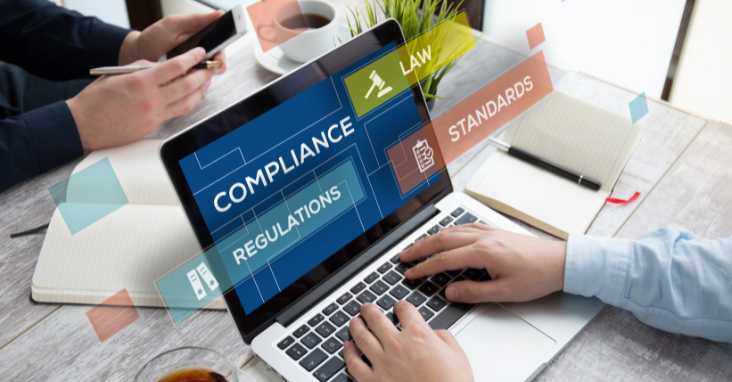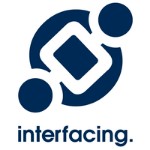In today’s dynamic business landscape, navigating the complex terrain of regulatory compliance is crucial for any organization. Whether you’re a seasoned external compliance auditor, professional or just starting to dip your toes into this intricate world, the compliance audit plays a pivotal role in ensuring your organization adheres to the ever-evolving regulatory landscape.
In this comprehensive guide, we’ll delve deep into the world of compliance, security controls and internal audits, providing you with insights, tools, and actionable steps to effectively manage and thrive within this critical domain.
So, let’s embark on this journey together, unraveling the intricacies of compliance audits and understanding their significance. From the fundamental concepts to practical tools and frequently asked questions, we’ve got you covered every step of the way.

Introduction
The importance of compliance audits
Compliance audits are not just a box-ticking exercise; they are a fundamental component of running a successful and ethical organization. In today’s highly regulated environment, failing to comply with applicable laws and regulations can lead to severe consequences, including hefty fines, legal actions, and damage to your organization’s reputation.
A compliance audit serves as a crucial risk management tool, helping you identify and rectify potential compliance issues before they escalate into significant problems.
Key Points:
- Compliance audits are essential for risk management.
- Non-compliance can lead to fines, legal actions, and reputational damage.
What is a compliance audit?
At its core, a compliance audit is a systematic review and examination of an organization’s adherence to regulatory requirements, industry standards, and internal policies. It involves assessing whether the organization’s practices, processes, and operations align with the established compliance framework for international organization. The primary objective of compliance auditor is to identify any deviations from compliance standards and recommend corrective actions to bring the organization back in line with regulatory expectations.
Key Points:
- Compliance audits evaluate adherence to regulations, standards, and internal policies.
- The goal is to identify deviations and recommend corrective actions.
Your role in compliance audits
Whether you’re a compliance officer, a member of the internal audit team, or a stakeholder within your organization, understanding your role in the compliance audit process is essential.
Your active participation and cooperation are integral to the success of the audit. Embrace the audit as an opportunity for growth and improvement rather than a mere obligation.
Key Points:
- Active participation is crucial for audit success.
- View the audit as an opportunity for improvement.

Understanding Regulatory Compliance
The regulatory landscape
Before delving into the intricacies of compliance audits, it’s essential to grasp the vast and evolving financial industry regulatory authority landscape that organizations operate within.
Regulations are not static; they evolve and change to address emerging risks and challenges. Depending on your industry, you may be subject to a wide array of regulations, such as: general data protection regulation, privacy laws, financial regulations, environmental standards, and more.
Key Points:
- Regulations are dynamic and subject to change.
- Different industries face various regulatory requirements.

The Regulatory Landscape
The regulatory landscape is a complex and multifaceted environment that organizations of all sizes and industries must navigate. Regulations are the rules and standards set by government authorities, industry regulatory bodies, and other governing bodies to ensure fair and ethical business practices, protect consumers, and address various societal concerns.
Here are some key points to consider:
- Diverse Regulations: Depending on your industry and location, you may be subject to a wide array of regulations. These can include data privacy laws, financial regulations, environmental standards, health and safety regulations, health insurance portability and more. Each set of regulations is designed to address specific industry needs and concerns.
- Continuous Evolution: Regulations are not static; they evolve over time to adapt to changing circumstances, emerging risks, and technological advancements. Staying informed about regulatory changes is crucial for compliance professionals as failure to do so can lead to non-compliance.
- Cross-Border Considerations: In today’s globalized world, many organizations operate across borders, making it essential to understand and comply with regulations in multiple jurisdictions. Navigating the differences between national and international regulations can be particularly challenging.
- Industry Associations: Industry-specific organizations and associations often provide valuable resources and guidance on compliance. Joining such associations can help you stay informed about industry-specific regulations and best practices.

Consequences of Non-Compliance
The consequences of failing to comply with regulatory requirements can be severe, and they extend beyond financial penalties.
Here’s a more detailed exploration of the potential ramifications:
- Financial Penalties: Regulatory authorities have the power to impose significant fines on organizations found to be in violation of regulations. These fines can range from minor penalties to substantial financial burdens, depending on the severity of the non-compliance.
- Legal Liabilities: Non-compliance can lead to legal actions, including lawsuits filed by affected parties or government agencies. Legal battles can be costly, time-consuming, and damaging to an organization’s reputation.
- Reputational Damage: Perhaps one of the most significant long-term consequences of non-compliance is the damage to an organization’s reputation. News of non-compliance can spread quickly through the media and social channels, eroding the trust of customers, partners, investors, and the public.
- Loss of Business Opportunities: Non-compliant organizations may find it challenging to secure contracts, partnerships, or investments. Many stakeholders prefer to work with organizations that have a strong track record of compliance.
- Operational Disruptions: Compliance violations may lead to operational disruptions, including the suspension of business activities or the need to overhaul internal processes to meet compliance standards.
- Employee Morale: Non-compliance can have a negative impact on employee morale. Team members may become demotivated if they perceive their organization as ethically challenged or unable to meet regulatory requirements.
- Increased Scrutiny: Once an organization faces compliance issues, regulatory authorities may subject it to increased scrutiny and monitoring, creating additional challenges and costs.
- Difficulty in Attracting Talent: High-performing employees often seek organizations with a commitment to ethical and compliant operations. Non-compliant organizations may struggle to attract and retain top talent.
It’s important to recognize that the consequences of non-compliance can vary widely depending on the nature of the regulations, the industry, and the specific circumstances of the violation.
However, the potential risks associated with non-compliance make it imperative for organizations to have security policies that prioritize compliance efforts.
In summary, understanding the regulatory landscape and the potential consequences of non-compliance is fundamental to the compliance process. It underscores the importance of proactive compliance management and the critical role of compliance audits in identifying and mitigating compliance risks.
As we continue our exploration of compliance audits, we’ll delve into the practical aspects of conducting these audits effectively and the software tools that can assist in this process.

The Compliance Audit Process
Step 1: Preparation
The initial phase is all about laying a strong foundation for the final audit report. Here’s an in-depth look at what this step entails:
Define the Audit Scope:
- Detailed Scope Definition: Begin by clearly defining the scope of the audit. This involves identifying which regulatory requirements, industry standards, and internal policies are applicable to your organization. Be as specific as possible to ensure that the audit remains focused and actionable.
- Risk Assessment: Conduct a risk assessment to prioritize areas of compliance that may pose the highest risk to your organization. Not all regulations are equal in their impact, so understanding where the greatest risks lie is crucial.
Assemble an Audit Team:
- Multidisciplinary Team: Depending on the complexity of your organization and the scope of the audit, assemble a multidisciplinary audit team. This may include compliance professionals, subject matter experts, internal auditors, external audits and external consultants if necessary.
- Clear Roles and Responsibilities: Ensure that each team member understands their roles and responsibilities throughout the audit process. Clear communication and coordination are essential for a successful audit.
Develop an Audit Plan:
- Audit Objectives: Clearly state the objectives of the audit. What are you trying to achieve through this audit? Whether it’s identifying compliance gaps, assessing the effectiveness of internal controls, or ensuring alignment with industry standards, define your goals.
- Audit Methodology: Outline the methodology you’ll use during the audit. This includes detailing the audit procedures, data collection methods, and the sources of evidence you’ll rely on.
- Timeline and Schedule: Develop a timeline and schedule for the audit, including key milestones and deadlines. Be realistic about the time required for each phase of the audit.
Regulatory Knowledge:
- Stay Updated: Ensure that your team is up-to-date with the latest regulatory changes that may affect the audit. Regulations are subject to frequent updates, and compliance requirements can evolve rapidly.
Stakeholder Communication:
- Inform Stakeholders: Communicate the audit’s purpose and timeline to relevant stakeholders within your organization. Ensure that they understand the importance of their cooperation during the audit process.
Key Points:
- Clear scope definition is essential for focused audits.
- Assemble a capable and well-coordinated audit team.
- Develop a comprehensive audit plan with clear objectives and methodology.
- Stay updated on regulatory changes.
- Effective communication with stakeholders is crucial.
Step 2: Assessment
The assessment phase is where the core audit activities take place. Here’s a more detailed breakdown of what happens during this step:
Gathering Evidence:
- Data Collection: Collect evidence to assess compliance with regulatory requirements. This evidence can come from various sources, including documents, records, interviews, and observations.
- Sampling Techniques: In cases where collecting all available data is not feasible, use statistical sampling techniques to gather representative samples that provide insights into compliance.
Interviews and Documentation Review:
- Interview Key Personnel: Conduct interviews with key personnel to gain a deeper understanding of processes and controls. This may include employees responsible for compliance, department heads, and executives.
- Document Review: Thoroughly review relevant documentation, including policies, procedures, manuals, contracts, and records. Document review provides critical insights into how compliance is managed within your organization.
Assessing Controls:
- Effectiveness of Controls: Evaluate the effectiveness of internal controls and processes in place to ensure compliance. Determine whether these controls are adequately designed and implemented.
- Identify Deviations: Identify any deviations from compliance standards or internal policies. These deviations may be in the form of non-compliance incidents, weaknesses in controls, or process inefficiencies.
Risk Analysis:
- Risk Identification: Assess the risks associated with non-compliance incidents or control weaknesses. Determine the potential impact and likelihood of these risks occurring.
- Root Cause Analysis: Investigate the root causes of compliance deviations. Understanding why non-compliance occurred is crucial for designing effective corrective actions.
Key Points:
- Gather evidence from various sources.
- Conduct interviews and review documentation.
- Assess the effectiveness of internal controls.
- Identify deviations from compliance standards.
- Analyze compliance-related risks and their root causes.
Step 3: Reporting
The reporting phase is where the findings and insights from customer data gathered during the assessment phase are documented and communicated. Here’s a closer look at this crucial step:
Comprehensive Audit Report:
- Detailed Findings: Prepare a comprehensive audit report that includes detailed findings related to compliance deviations, control weaknesses, and areas of concern. Present these findings in a clear and organized manner.
- Recommendations: Provide actionable recommendations for corrective actions to address identified issues. Recommendations should be practical, specific, and prioritized based on their impact and urgency.
Clarity in Reporting:
- Clear and Concise: Ensure that the audit report is clear, concise, and easy to understand. Use plain language and avoid jargon to facilitate stakeholder comprehension.
Stakeholder Communication:
- Presentation: Present the audit findings and recommendations to relevant stakeholders within your organization. Be prepared to answer questions and address concerns.
- Executive Summary: Include an executive summary in the audit report that provides a high-level overview of key findings and recommendations. This summary is especially useful for busy executives.
Follow-Up:
- Monitoring Progress: After the audit report is shared, monitor the progress of corrective actions. Ensure that the recommended changes are being implemented and that non-compliance issues are being addressed.
Key Points:
- Create a comprehensive audit report with detailed findings and recommendations.
- Prioritize recommendations based on impact and urgency.
- Communicate findings clearly to stakeholders.
- Monitor the implementation of corrective actions.
In summary, the compliance audit process is a systematic and thorough examination of an organization’s adherence to regulatory requirements and internal policies. Effective preparation, meticulous assessment, and clear reporting are essential for the success of this process. Compliance audits not only identify non-compliance but also provide valuable insights for improving business compliance processes and controls and mitigating compliance-related risks. As organizations continue to navigate the intricate landscape of regulatory compliance, the compliance audit remains a critical tool for internal business processes and ensuring ethical and responsible business practices.

Software Tools for Effective Compliance Audits
In today’s digital age, technology plays a pivotal role in streamlining and enhancing the compliance auditing. Several software tools are available to assist organizations in conducting effective compliance audits.
Here are some notable tools along with their URLs and reasons why they are useful:
Compliance.ai
Usefulness: Compliance.ai is a powerful regulatory compliance management platform that leverages artificial intelligence (AI) to provide real-time updates on regulatory changes. It helps organizations stay up-to-date with evolving regulations, manage compliance tasks, do compliance regulation and automate regulatory compliance processes and monitoring. The AI-driven capabilities of Compliance.ai reduce the risk of missing crucial regulatory updates, ensuring that your organization remains compliant at all times.
Ideagen Pentana
Usefulness: Ideagen Pentana is a comprehensive audit management software that facilitates the entire audit lifecycle, including compliance audits. It offers features such as audit planning, risk assessment, document management, and reporting. Pentana streamlines audit processes, enhances collaboration among audit teams, and provides valuable insights through analytics. Its user-friendly interface simplifies audit management, making it an indispensable tool for compliance professionals.
ACL Analytics
Usefulness: ACL Analytics is a data analytics and risk management software that empowers organizations to proactively manage their compliance processes and reduce risks. It allows users to access and analyze data from various sources, identify anomalies, and uncover potential compliance issues. By providing data-driven insights, ACL Analytics enables organizations to strengthen their compliance controls and make informed decisions.
TeamMate+
Usefulness: TeamMate+ is an audit management software that provides a comprehensive platform for conducting compliance audits and managing audit processes. There are customizable audit plans, scheduling and resource allocation, automated workflows, document repository, risk assessment tools, data analytics, customizable reports, real-time dashboards and compliance-specific dashboards
MetricStream
Usefulness: MetricStream is a governance, risk management, and compliance (GRC) software platform that helps organizations manage compliance and risk. There are regulatory mapping, alerts and notifications, audit planning, external audit reports, workpapers, compliance assessments, customizable reports, dashboards, workflow automation and collaboration tools.
NAVEX Global
Usefulness: NAVEX Global offers a suite of compliance software solutions, including those for audit management and compliance program management. There are audit planning, audit execution, compliance program integration, customizable reports, analytics, task assignments, document repository and incident reporting.
Key Points:
- Compliance.ai: Real-time regulatory updates and centralized regulatory content management streamline compliance audits.
- Ideagen Pentana: Comprehensive audit management software that supports risk assessment, document management, and collaboration for compliance audits.
- ACL Analytics: Data analytics and risk management software that empowers organizations to proactively manage compliance and reduce risks.
- TeamMate+: Customizable audit plans, workflow automation, and document management enhance efficiency and consistency in compliance auditing.
- MetricStream: Governance, risk management, and compliance platform with tools for regulatory compliance management, audit planning, and compliance assessments.
- NAVEX Global: Suite of compliance software solutions supporting audit planning and execution, compliance program management, and reporting for compliance audits.

FAQ: Answers to Your Compliance Audit Questions
What is the purpose of a compliance audit?
Answer: The purpose of a compliance audit is to assess an organization’s adherence to regulatory requirements, industry standards, and internal policies. It helps identify compliance deviations and recommends corrective actions to ensure alignment with established regulatory guidelines and compliance frameworks.
How often should compliance audits be conducted?
Answer: The frequency of compliance audits depends on regulatory requirements, industry standards, and organizational needs. Typically, organizations conduct regular external compliance audits conducted on themselves, ranging from annual to quarterly, to ensure ongoing compliance.
What are the key regulations affecting my industry?
Answer: The key regulations affecting your industry vary based on your sector. Conduct thorough research and consult industry associations to identify the specific regulations that apply to your organization.
What are common compliance audit findings?
Answer: Common compliance audit findings include inadequate documentation, incomplete records, non-compliance with specific compliance rules and regulations, lack of training, and ineffective internal controls.
How can I prepare for a compliance audit?
Answer: To prepare for a compliance audit, define the audit scope, assemble a competent audit team, understand relevant regulations, and ensure all stakeholders are aware of their roles in operational audits. Review and update compliance policies internal guidelines and procedures as necessary.
What should I expect during a compliance audit?
Answer: During a compliance audit, you can expect the audit team to assess your organization’s compliance controls, practices, and documentation. Interviews, document reviews, and evidence gathering are common audit procedures.
How can technology assist in compliance audits?
Answer: Technology can assist in compliance audits by automating compliance monitoring, providing real-time updates on regulatory changes, streamlining audit processes, enhancing data analytics, and improving collaboration among audit teams.
What are the benefits of using compliance audit software?
Answer: Benefits of using compliance audit software include increased efficiency, reduced manual efforts, improved accuracy, more data security standard enhanced reporting capabilities, and better risk management in compliance auditing. These tools streamline audit processes and ensure compliance with regulatory requirements.
How do compliance audits differ from financial audits?
Answer: Compliance audits focus on assessing an organization’s adherence to regulatory requirements and internal policies. In contrast, financial audits primarily examine an organization’s financial statements for accuracy and compliance with accounting standards and an accountability act.
What happens if my organization fails a compliance audit?
Answer: If your organization fails a compliance audit, corrective actions must be taken to address identified issues promptly. Failure to rectify compliance deviations can lead to legal consequences, financial penalties, and reputational damage.

Conclusion
In the ever-evolving world of business, compliance audits are not just a necessary chore but a strategic imperative. They serve as a proactive approach to managing risks, ensuring ethical operations, and building trust with stakeholders.
By understanding the regulatory landscape, embracing technology, and actively participating in the process, you can position your organization for long-term success.
Compliance auditors are your compass in the sea of regulations, guiding you toward safe harbors and away from treacherous waters. Embrace them, and let them be your allies on your journey to a compliant and ethical future.
Key Points:
- Compliance audits are a strategic imperative.
- Technology and active participation are crucial for success.















